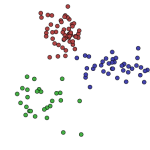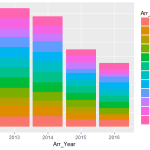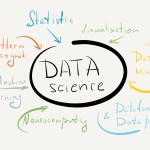Supervised and Unsupervised Learning

In data science world supervised and unsupervised learning algorithms were the famous words we could hear more frequently when we were talking with the people who are working in data science field, furthermore the key differences between these two learning algorithms is the must learn concepts for differentiating the real world problems.
Supervised Learning Wiki Definition
Supervised learning is a data mining task of inferring a function from labeled training data.The training data consist of a set of training examples. In supervised learning, each example is a pair consisting of an input object (typically a vector) and the desired output value (also called the supervisory signal). A supervised learning algorithm analyzes the training data and produces an inferred function, which can be used for mapping new examples. An optimal scenario will allow for the algorithm to correctly determine the class labels for unseen instances. This requires the learning algorithm to generalize from the training data to unseen situations in a “reasonable” way.
Unsupervised Learning Wiki Definition
In data mining or even in data science world, the problem of an unsupervised learning task is trying to find hidden structure in unlabeled data. Since the examples given to the learner are unlabeled, there is no error or reward signal to evaluate a potential solution.
Supervised and unsupervised learning with a real-life example
- Suppose you have a basket and it is filled with different kinds of fruits.
- Your task is to arrange them as groups.
- For understanding let me clear the names of the fruits in our basket.
- We have four types of fruits. They are

CHERRIES
Supervised Learning :
- You already learn from your previous work about the physical characters of fruits
- So arranging the same type of fruits at one place is easy now
- In data mining terminology the previous work is called as training the data
- You already learn the things from your train data, this is because of response variable
- Response variable means just a decision variable
- You can observe response variable below (FRUIT NAME)
| No. | SIZE | COLOR | SHAPE | FRUIT NAME |
|---|---|---|---|---|
| 1 | Big | Red | Rounded shape with a depression at the top | Apple |
| 2 | Small | Red | Heart-shaped to nearly globular | Cherry |
| 3 | Big | Green | Long curving cylinder | Banana |
| 4 | Small | Green | Round to oval,Bunch shape Cylindrical | Grape |
- Suppose you have taken a new fruit from the basket then you will see the size , color, and shape of that particular fruit.
- If size is Big , color is Red , the shape is rounded shape with a depression at the top, you will confirm the fruit name as apple and you will put in apple group.
- Likewise for other fruits also.
- The job of grouping fruits was done and the happy ending.
- You can observe in the table that a column was labeled as “FRUIT NAME“. This is called as a response variable.
- If you learn the thing before from training data and then applying that knowledge to the test data(for new fruit), This type of learning is called as Supervised Learning.
Supervised Learning Algorithms:
All classification and regression algorithms come under supervised learning.
- Logistic Regression
- Decision trees
- Support vector machine (SVM)
- k-Nearest Neighbors
- Naive Bayes
- Random forest
- Linear regression
- polynomial regression
- SVM for regression
Unsupervised Learning :
- Suppose you have a basket and it is filled with some different types of fruits and your task is to arrange them as groups.
- This time, you don’t know anything about the fruits, honestly saying this is the first time you have seen them. You have no clue about those.
- So, how will you arrange them?
- What will you do first???
- You will take a fruit and you will arrange them by considering the physical character of that particular fruit.
- Suppose you have considered color.
- Then you will arrange them on considering base condition as color.
- Then the groups will be something like this.
- RED COLOR GROUP: apples & cherry fruits.
- GREEN COLOR GROUP: bananas & grapes.
- So now you will take another physical character such as size .
- RED COLOR AND BIG SIZE: apple.
- RED COLOR AND SMALL SIZE: cherry fruits.
- GREEN COLOR AND BIG SIZE: bananas.
- GREEN COLOR AND SMALL SIZE: grapes.
- The job has done, the happy ending.
- Here you did not learn anything before ,means no train data and no response variable.
- In data mining or machine learning, this kind of learning is known as unsupervised learning.
Unsupervised learning algorithms:
All clustering algorithms come under unsupervised learning algorithms.
- K – means clustering
- Hierarchical clustering
- Hidden Markov models
Summary:
Let’s summarize what we have learnt in supervised and unsupervised learning algorithms post.
Supervised learning: Learning from the know label data to create a model then predicting target class for the given input data.
Unsupervised learning: Learning from the unlabeled data to differentiating the given input data.
Source: Dataaspirant

Kalyan Banga226 Posts
I am Kalyan Banga, a Post Graduate in Business Analytics from Indian Institute of Management (IIM) Calcutta, a premier management institute, ranked best B-School in Asia in FT Masters management global rankings. I have spent 14 years in field of Research & Analytics.
















1 Comment
Machine Learning vs. Traditional Statistics - Fusion Analytics World
December 7, 2016 at 12:41 pm[…] of a learner. At the highest level, the most popular learning algorithms can be categorized into supervised and unsupervised types and each into high-level useful categories (also called data mining functions): . Supervised […]